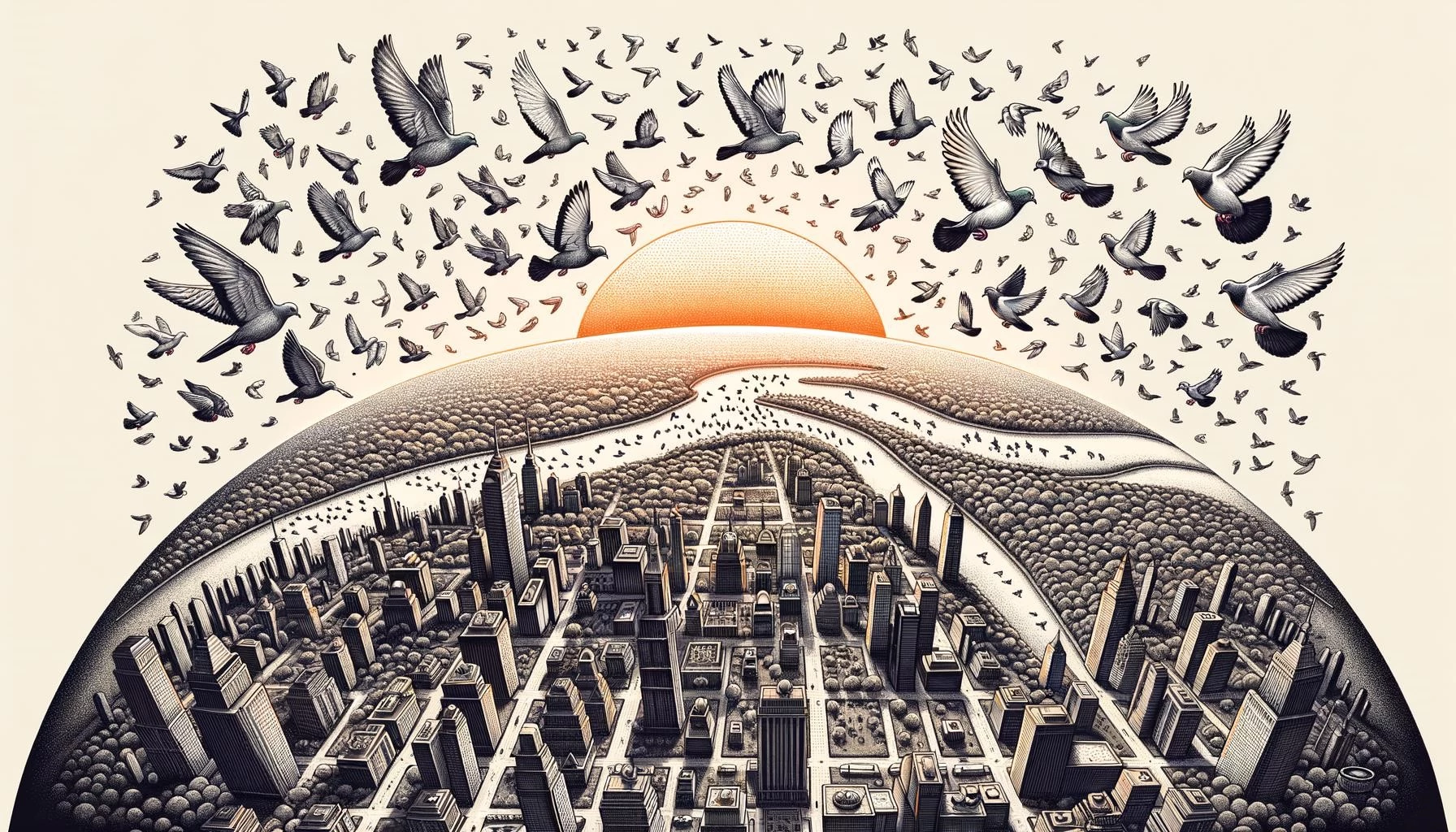Pigeons are known for their lack of migration, which sets them apart from many other bird species. While other birds travel long distances in search of food, suitable habitats, or to breed, pigeons have adapted to a different strategy for survival. This section will explore the reasons behind pigeon migration behavior and shed light on their unique habits.
1. Breeding Cycle and Reproduction
Unlike some bird species that have a specific breeding season, pigeons can breed throughout the year. They have the ability to mate and nest in both spring and autumn, making migration unnecessary for them. If pigeons were to migrate, they would have to make multiple treks within a year, which would be an energy-intensive process.
Add to that the fact that pigeons can successfully rear their young in their current habitats, and there is little incentive for them to embark on long-distance migrations. Their breeding cycle and reproductive behavior contribute to their decision not to migrate.
2. Adaptability to Various Habitats
Pigeons are highly adaptable birds and can thrive in diverse habitats. They are known to inhabit a wide range of environments, from urban areas with bustling cityscapes to rural countrysides and open fields. This adaptability allows them to find food, water, and shelter without the need to undertake long-distance migrations.
Unlike some migratory bird species that rely on specific resources in their breeding or wintering grounds, pigeons can find suitable conditions for survival in their current habitats. Their ability to adapt to various environments is a key reason why they do not migrate.
3. Access to a Consistent Food Supply
One of the reasons why pigeons do not migrate is their reliance on a steady and consistent food supply, which they often find near human settlements. Pigeons have adapted to living close to humans, taking advantage of the food sources that are readily available in urban areas, such as parks, plazas, and even backyards.
This accessibility to food throughout the year eliminates the need for pigeons to undertake long journeys in search of nourishment. As long as they can find enough food for themselves and their offspring in their current habitats, there is little incentive for them to migrate.
In summary, pigeons have developed a unique strategy for survival that does not involve long-distance migration. Their ability to breed throughout the year, adaptability to various habitats, and access to a consistent food supply near human settlements are key factors contributing to their non-migratory behavior.
Pigeon Habitats: Natural and Man-Made
Pigeons have a remarkable ability to adapt to different habitats, enabling them to thrive in a variety of environments. This section will explore both natural and man-made habitats where pigeons can be found.
1. Natural Habitats
Pigeons can be found in a range of natural habitats, including urban areas, rural landscapes, and open fields. In urban environments, they often take shelter on the ledges and structures of buildings, where they find roosting and nesting spaces.
In rural areas, pigeons may inhabit barns, agricultural buildings, and other structures commonly found on farms. They may also be found in open fields, where they can forage for food and find suitable nesting spots.
Overall, pigeons have adapted to thrive in natural habitats that offer them protection, food sources, and the ability to establish nests and raise their young.
2. Man-Made Habitats
Man-made habitats created by humans also serve as suitable homes for pigeons. These habitats can be found in urban areas, where pigeons have taken advantage of the structures that provide shelter and nesting spaces. They frequently roost on ledges, rooftops, or under bridges.
The availability of man-made habitats in urban settings has facilitated the population growth of feral pigeons. Structures on buildings, such as cornices, ledges, or even air conditioning units, offer pigeons a safe place to nest and protect their young.
In summary, pigeons can be found in a variety of natural and man-made habitats. Their ability to adapt to different environments, whether natural or shaped by human activities, has allowed them to thrive and coexist alongside humans in urban and rural areas alike.








